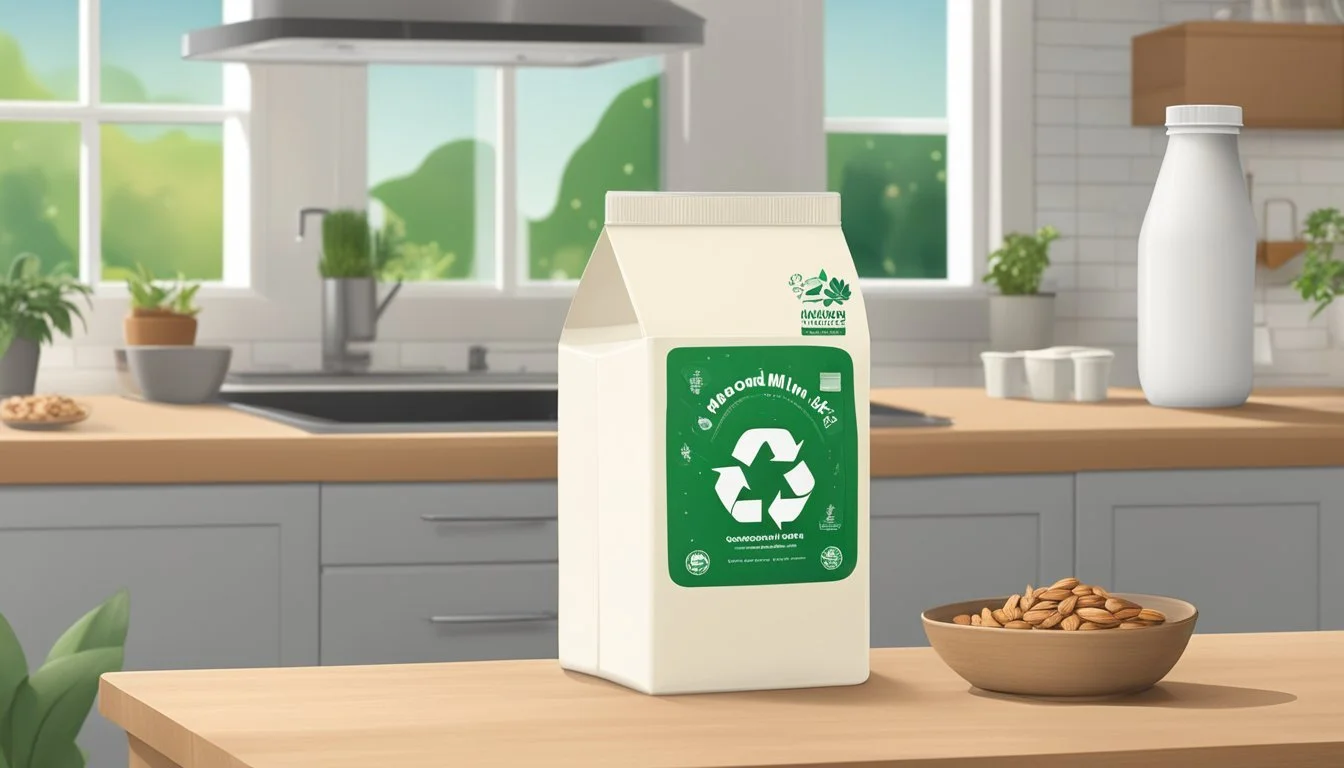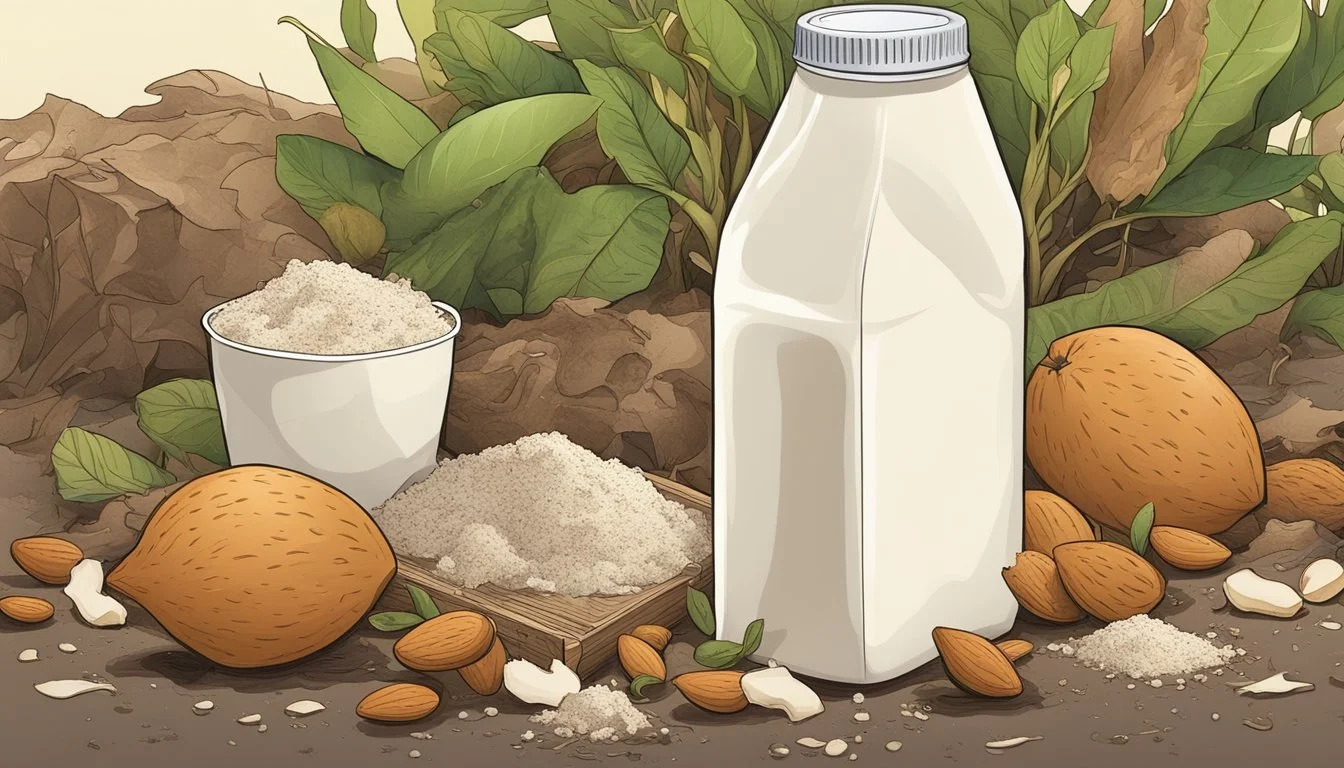Can You Compost Almond Milk Cartons?
Unpacking the Facts
Composting has become a widely accepted practice for individuals looking to reduce waste and contribute to a healthier environment. Almond milk cartons, commonly comprised of paper, plastic, and aluminum, present a unique challenge in this eco-friendly process. While the paper component is biodegradable and seems a good fit for composting, the thin layers of plastic and aluminum designed to preserve freshness and prevent leakage complicate matters. These materials do not break down easily and can introduce contaminants into the compost.
Recycling emerges as a more suitable option for dealing with almond milk cartons, aligning with their complex material composition. Many recycling programs accept these cartons if they are emptied and rinsed correctly, as the recycling process can handle the separation of different materials. It is crucial to check local recycling guidelines, as these may vary and not all facilities are equipped to process such composite materials.
When it comes to composting, the clear separation of organic and non-organic waste is key. While the organic elements of almond milk cartons may decompose, the synthetic layers can hinder the overall integrity and quality of the compost. This distinction emphasizes the importance of understanding the composition of packaging materials and the most appropriate methods of disposal to ensure an effective and environmentally responsible outcome.
Understanding Almond Milk Cartons
Almond milk cartons are complex in their structure, designed to protect their contents and extend shelf life. Their construction from multiple materials serves specific functions in preserving almond milk.
Composition of Almond Milk Cartons
Materials Used: Almond milk cartons typically consist of layers that include paper, plastic, and aluminum. The paper component provides rigidity and durability, while the plastic coating, often polyethylene, acts to prevent leaks and preserve freshness. An aluminum layer is added to protect against light and oxygen infiltration, which can deteriorate the milk's quality.
Paper: Offers structural strength
Plastic Coating (Polyethylene): Creates a moisture barrier
Aluminum: Blocks light and oxygen
The melding of these materials into composite materials ensures the carton is sturdy and maintains the quality of the almond milk inside.
Shelf-Stable Cartons and Their Materials
Shelf-stable cartons, also known as aseptic cartons, are specifically designed to keep almond milk safe and consumable for extended periods without refrigeration. These cartons typically use a more robust layering of cardboard, plastic, and aluminum to create an even more effective barrier against environmental factors.
Cardboard: Forms the main structure
Plastic Layers: Enhance sealing and protect against contamination
Aluminum Layers: Serve as an excellent barrier to air and light
These components together ensure that the almond milk remains unspoiled and that the carton can withstand the stresses of transportation and storage.
Composting Fundamentals
Composting is a natural process that involves the breakdown of organic materials by microorganisms, transforming waste into a nutrient-rich soil amendment. Here, we'll delve into the inner workings of composting and identify the materials suited for this eco-friendly practice.
How Composting Works
Composting requires four essential elements to effectively break down organic material: carbon, nitrogen, moisture, and oxygen. Microorganisms harnessed in this process thrive on these elements. They consume the organic matter, which is a mixture of carbon-rich 'brown' materials, like dead leaves and branches, and nitrogen-rich 'green' materials, such as food scraps and lawn clippings.
Brown materials provide carbon, serving as an energy source for the microorganisms.
Green materials supply nitrogen, which is crucial for building the cell structure of newly forming microbes.
The right balance of these elements, along with sufficient moisture and oxygen, fuels the decomposition process effectively. The maintenance of a compost pile involves turning it regularly to introduce oxygen and checking moisture levels to ensure the pile is damp but not overly wet.
Materials Suitable for Composting
Understanding what can and cannot be composted is vital for a successful composting operation. Suitable materials are biodegradable and can be categorized as either 'brown' or 'green'.
Green materials include:
Vegetable and fruit scraps
Coffee grounds and filters
Tea leaves
Fresh yard trimmings
Brown materials encompass:
Dry leaves
Straw and hay
Unwaxed cardboard
Newspaper
The ideal composting setup avoids including materials such as dairy, meats, oils, and plastic-coated paper products, as they can lead to odor problems, pests, or introduce toxins into the compost. Organic materials that decompose slowly or not at all without specialized industrial processes, such as plastic-coated almond milk cartons, are not recommended for standard backyard composting systems.
Can Almond Milk Cartons Be Composted?
Determining whether almond milk cartons can be composted involves understanding their material composition and the challenges they pose to composting processes.
Challenges in Composting Almond Milk Cartons
Almond milk cartons are often composite materials, consisting of paperboard, a thin plastic coating, and sometimes an aluminum layer. The plastic coating, which is present to prevent leakage and extend shelf life, is not biodegradable and complicates the composting process. Similarly, the aluminum barrier is non-biodegradable and must be separated from the paperboard before composting.
The process of separating these materials can be complex. While the paper component of the carton is indeed compostable, the plastic and aluminum layers inhibit the breakdown of the carton in a compost environment. Additionally, many household compost systems are not equipped to handle composite materials, which require industrial-scale facilities that perform hydropulping—a process that separates paper fibers from contaminants.
Alternatives to Composting for Almond Milk Cartons
Given the difficulties in composting almond milk cartons due to their non-biodegradable components, environmentally-conscious consumers may seek alternatives.
One option is to participate in recycling programs that accept such composite materials. Not every recycling center can process them, but some are equipped to handle the separation and recycling of different components of almond milk cartons. It is important to check with local recycling guidelines to understand whether these cartons are accepted and how they should be prepared for recycling.
Alternatively, consumers can reduce waste by choosing almond milk brands that use more environmentally-friendly packaging, thereby minimizing environmental impact. By making such choices, individuals contribute to reducing the amount of non-compostable and non-recyclable waste.
Recycling Process of Milk Cartons
The recycling of milk cartons, including those used for almond milk, involves a multi-step process to ensure the efficient recovery of materials for reuse. While every carton requires careful handling due to its composite structure, advancements in technology have made it possible to reclaim each component.
Collection and Separation
Most recycling programs accept milk cartons, gathering them through curbside collection or designated drop-off centers. Once collected, the cartons undergo a separation process to distinguish them from other recyclables. This initial sorting is crucial since milk cartons consist of layers of paper, plastic, and sometimes aluminum.
Pulping and Reuse of Carton Materials
To reclaim the paper component, cartons are subjected to pulping, a procedure where the materials are mixed with water and agitated to break down the fiber. The heavier plastic and aluminum layers separate from the paper fibers and float to the surface, allowing for further recycling of these materials. The recovered paper fibers are then dried and pressed to create new paper products, completing the cycle.
Environmental Implications
When considering the environmental implications of composting almond milk cartons, it is essential to recognize the interconnected aspects of waste management and resource conservation. This section delves into the impacts of these factors on landfills and the sustainability of packaging.
Reducing Waste and Landfill Use
Almond milk containers that are not properly disposed of can significantly increase landfill waste. As these containers are composed of composite materials, including paperboard, plastic, and sometimes aluminum, their breakdown in a landfill can be a slow process, exacerbating the environmental impact. Composting offers an alternative avenue to divert waste from landfills, but only if the materials are biodegradable.
Landfills: Reduced use via composting helps mitigate the problem of overflowing landfills and the associated greenhouse gas emissions.
Environmental Impact: Less landfill waste means a lower carbon footprint, as organic matter breaks down aerobically in compost, emitting less methane compared to anaerobic decomposition in landfills.
Sustainability of Packaging Choices
The sustainability of almond milk containers hinges on the materials used and the manufacturing process. Containers made with layers of plastic and aluminum are less environmentally friendly due to their challenging recycling process. However, containers that use sustainable sources of paper and a minimal amount of recyclable plastic align better with sustainability goals.
Sustainable Packaging: Manufacturers can lessen the environmental burden by opting for packaging that is both recyclable and made from renewable resources.
Recyclability: While some almond milk containers are recyclable, their actual recyclability depends on the recycling facility and local policies, which affects the overall sustainability of the containers.
In summary, while the goal is to reduce waste and promote sustainability, the composting of almond milk cartons presents complexities due to the materials involved. The real-world application of recycling or composting these containers must account for these factors to ensure a positive environmental impact.
Practical Tips for Consumers
Consumers play a crucial role in sustainability and waste reduction. Navigating the complexities of recycling and composting almond milk cartons, they can foster environmentally friendly habits while minimizing their ecological footprint.
Proper Disposal and Recycling Habits
Almond milk cartons, as composite packaging with layers of paper, plastic, and sometimes aluminum, typically require special handling for recycling. Consumers should check with local recycling programs to confirm if these cartons are accepted. Often, these programs will instruct individuals to:
Rinse the cartons thoroughly to remove any product residue.
Check local recycling guidelines, as not all facilities can process cartons.
Flatten or disassemble cartons to save space in recycling bins.
Drop off at specific collection points if curbside recycling is not an option.
It's important for consumers to be aware that not all areas have the facilities to recycle mixed-material cartons, and they may need to seek out specialty recyclers.
Choosing Eco-Friendly Product Packaging
Consumers should consider the sustainability of packaging when making purchases:
Opt for products in packaging that is clearly labeled as recyclable or compostable in their community to reduce waste.
Explore alternatives to conventional containers, such as purchasing almond milk in glass bottles that can be more easily recycled or reused.
Support brands that prioritize sustainability, selecting products that come in packaging made from post-consumer recycled content or those that participate in a take-back program.
Store products properly to extend their shelf life and avoid waste.
By actively selecting environmentally friendly packaging and engaging in proper disposal habits, consumers contribute to a sustainable future. They should continually educate themselves on the most effective ways to reduce waste, aiming to balance convenience with environmental responsibility.







